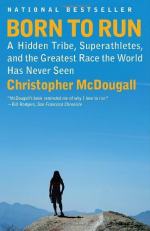|
This section contains 534 words (approx. 2 pages at 400 words per page) |

|
Born to Run: A Hidden Tribe, Superathletes, and the Greatest Race the World Has Never Seen Summary & Study Guide Description
Born to Run: A Hidden Tribe, Superathletes, and the Greatest Race the World Has Never Seen Summary & Study Guide includes comprehensive information and analysis to help you understand the book. This study guide contains the following sections:
This detailed literature summary also contains Topics for Discussion and a Free Quiz on Born to Run: A Hidden Tribe, Superathletes, and the Greatest Race the World Has Never Seen by Christopher McDougall.
"Born to Run: A Hidden Tribe, Superathletes, and the Greatest Race the World Has Never Seen" by Christopher McDougall tells a story of race involving a tribe of super runners.
The author of the book had a problem. He enjoyed running, but his body was giving out on him. When he went to specialists to discover what the pain in his foot was and how he should treat it, he was told that running was not natural for the body and that he would most likely need cortisone shots if he wanted to continue to run. However, he might want to consider stopping his running. Specialists pointed out that many people were injured while running and the body just was not made for all the pressure put on the knees or the pounding on the feet.
The author was a writer and during an assignment in Mexico, he was reading a magazine article that caught his interest. He learned about a tribe of peaceful long-distance runners who seemed to be able to go long distances without any problems. It was a race of people called the Taramuhara, who kept themselves separate from society. They were known for their serenity, good health, and incredible running skills. He wanted to learn more about them.
The author tracked down some members of the tribe and learned about a man known as Caballo Blanco who knew these people better than anyone. He spent some time tracking him down and discovered that the man had an idea for a race. It was a race that involved some of the greatest runners in the world and the Taramuhara. These runners all had a true passion for the sport and not for winning alone.
As the author researched running and learned about these people who had a true joy of running, he learned how to improve his own running to a point where he could run without pain. Modern runners had many misconceptions, beginning with shoes. One of the best ways to run was to go about it naturally and as close to barefoot as possible.
He learned that the human body was made for speed and for distance. The Tarahumara didn't need to warm up or train. They did what their bodies instinctively told them to do. After studying these great runners, the best advice a coach could give was to change a diet so that one acts as if one were poor. Fancy drinks and fancy diets did not lead to great runners.
The author researched coaches and long-distance runners. There was a common denominator with the runners who did the best. The author began to realize that running well wasn't about the sport itself, but rather a success that stemmed from a pure lifestyle. Not only were the best runners good runners, but they were good people who shared a love and compassion for those around them.
The story ended with a race in which the greatest writers of the world actually competed against one another. Instead of being cutthroat, it became a celebration of kindred spirits who cheered for each other and truly embraced the concept that all humans were born to run.
Read more from the Study Guide
|
This section contains 534 words (approx. 2 pages at 400 words per page) |

|



